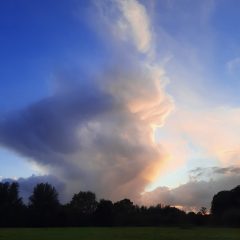I’ve continued to experiment with the playful, irreverent and sometimes associative relationship between word and image in ‘collage poems’. The process of making them can be brief and impulsive, but often extends over a long period of time, and might be seen as an iterative process.
Although I was away when they were published, Ink, Swear and Tears, featured two of these collage poems in their Word & Image curation back in February – ‘Octopus’ and ‘To Sleep’.

I’ve included an image of ‘Octopus’ above, which transforms the balletic tangle of limbs into a vision of an octopus. ‘To Sleep’ is another kind of visio-verbal fantasy of the luxuries of decadent, dream-filled sleep. Huge thanks to Kayleigh Jayshree and the team at Ink, Sweat & Tears for choosing these pieces for the feature!
A collage poem that I made as a birthday gift for my mum, also on the subject of dreaming, was featured on Sophie Herxheimer and W. N. Herbert’s Ghost Furniture Catalogue all the way back in August of last year. It’s titled ‘Fantasy Bed Collage’ and you can read it/view it/meditate on it here.

The Ghost Furniture Catalogue continues to advertise an open call: ‘Poems needed to wallpaper skulls and fit out rattling minds’.
I’m hoping that this year I’ll have more time to think deeply and critically about how the visual and the verbal intertwines in my writing practice, and what a body of work on this subject might look like.































